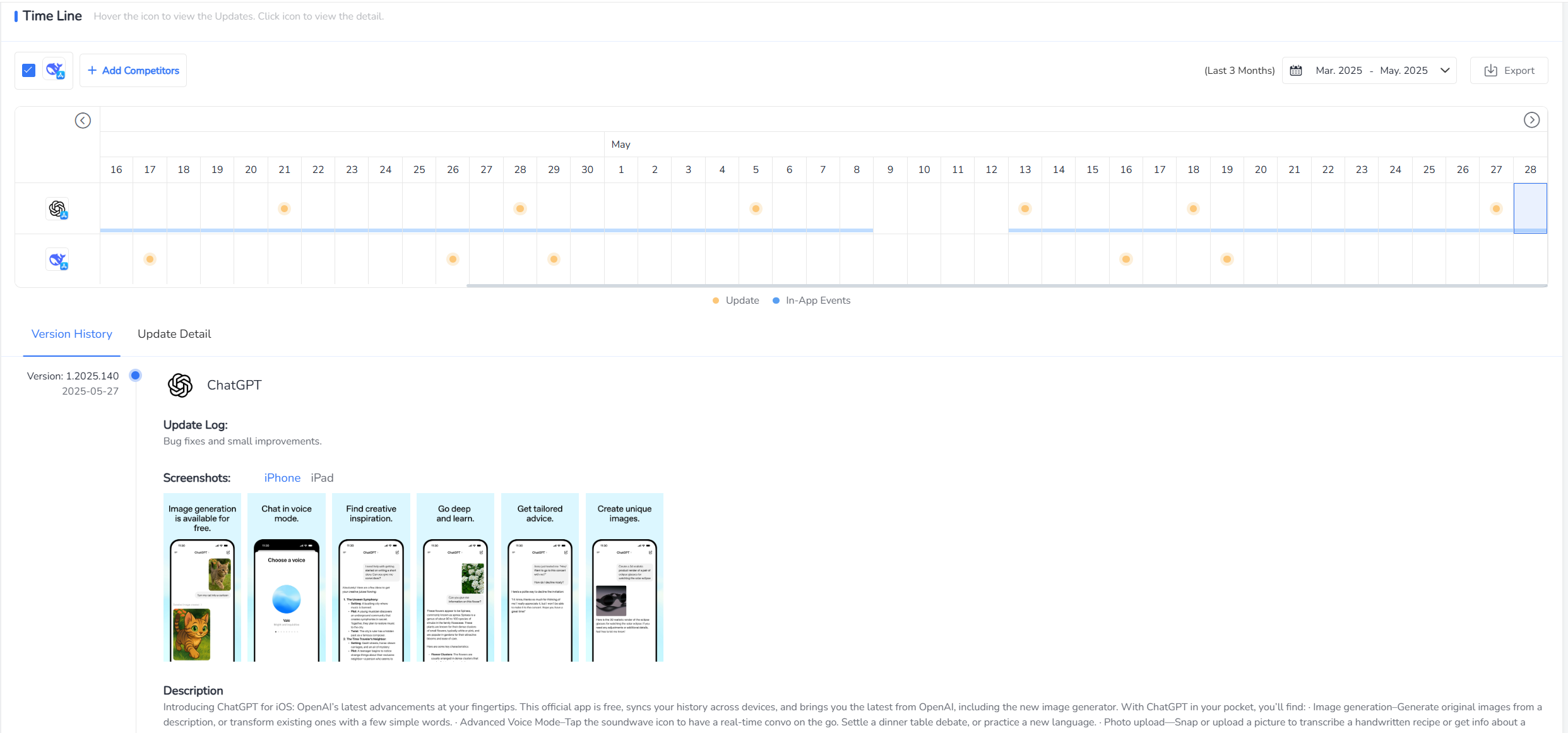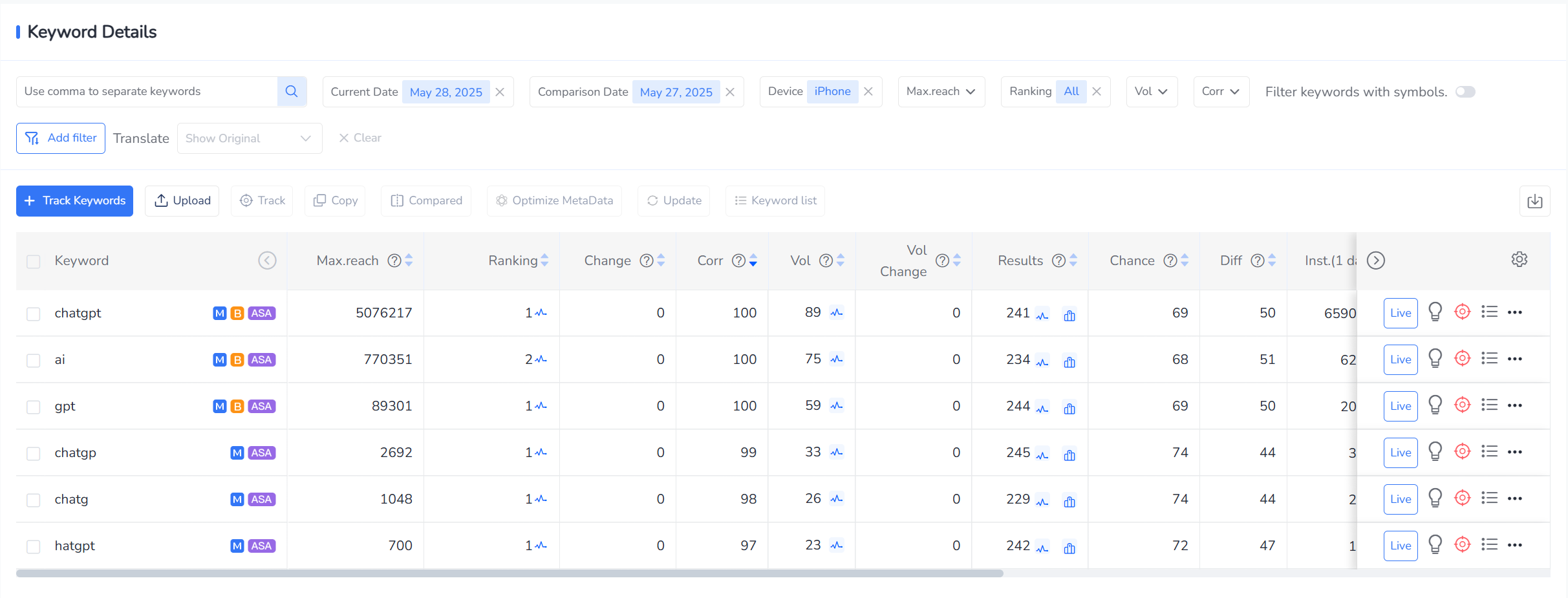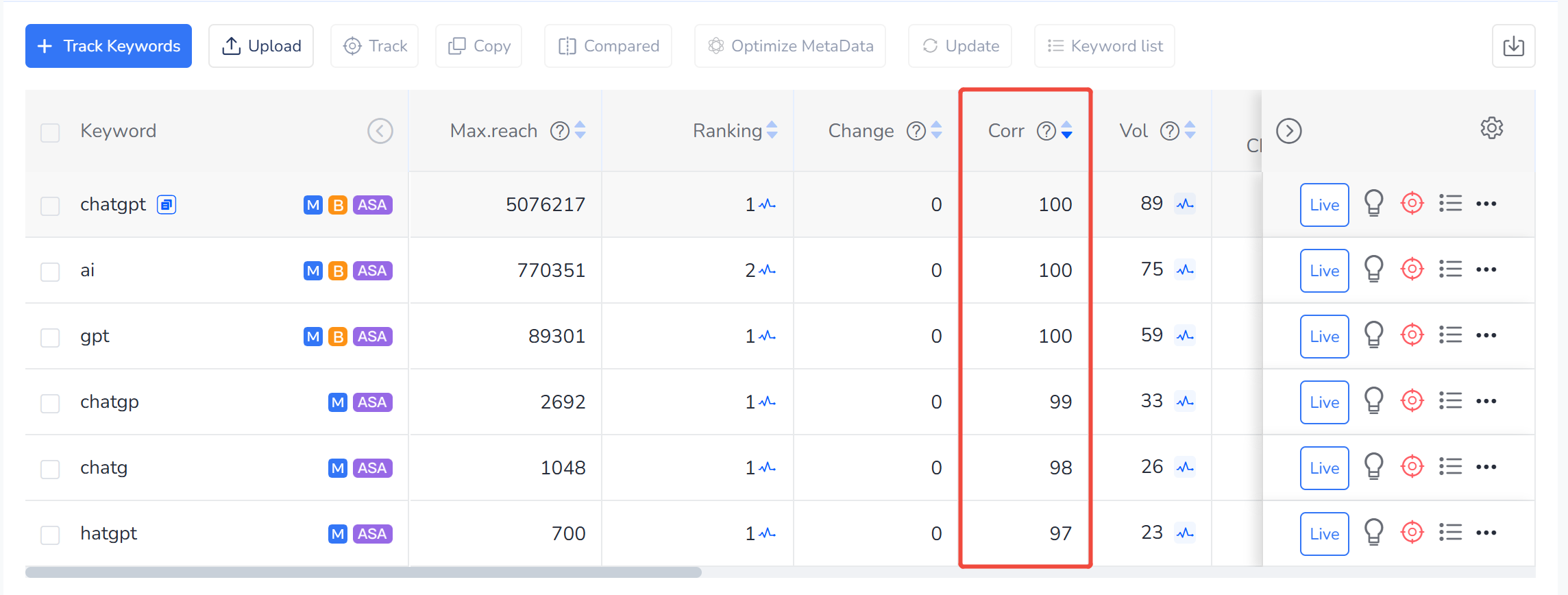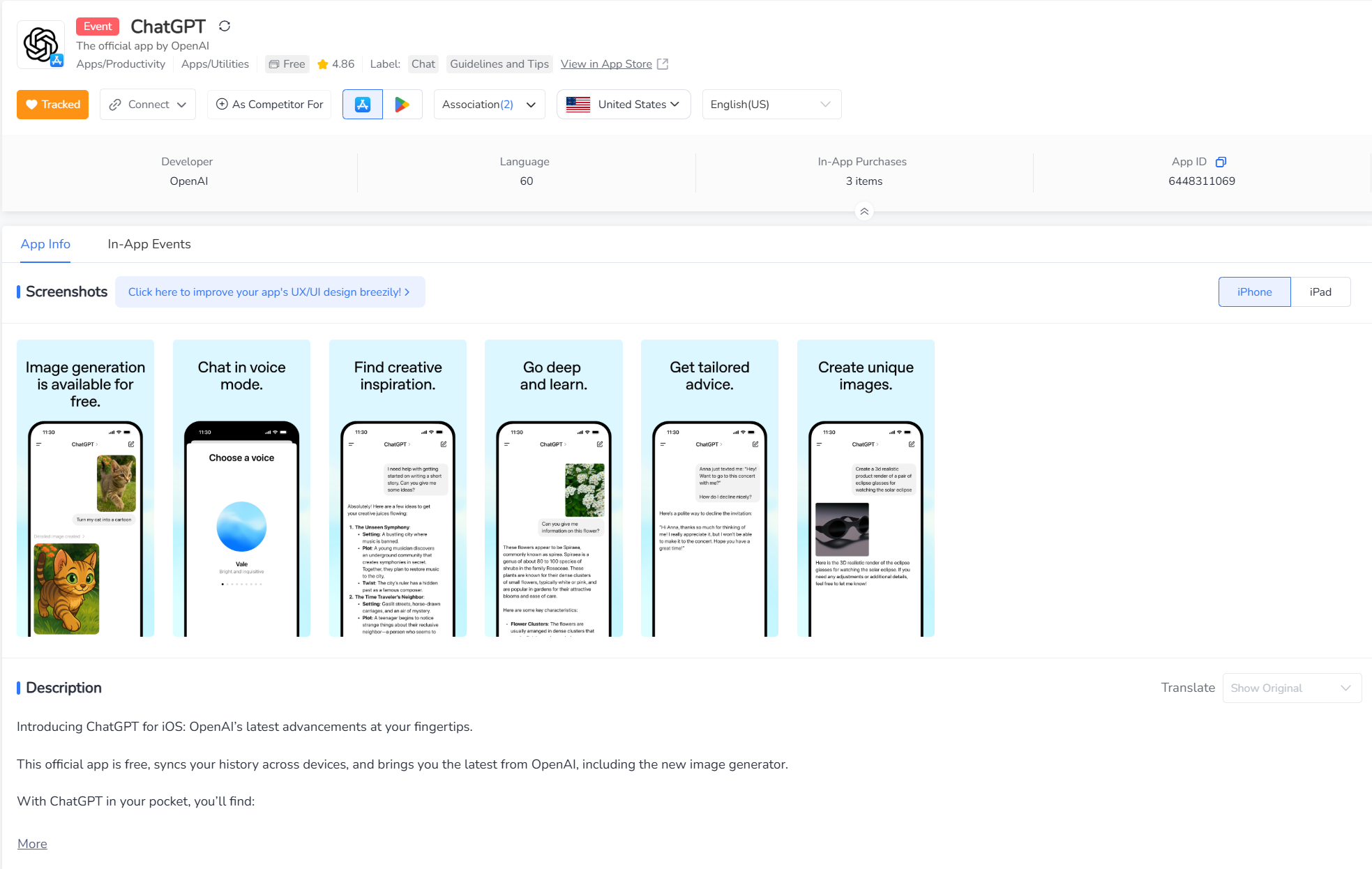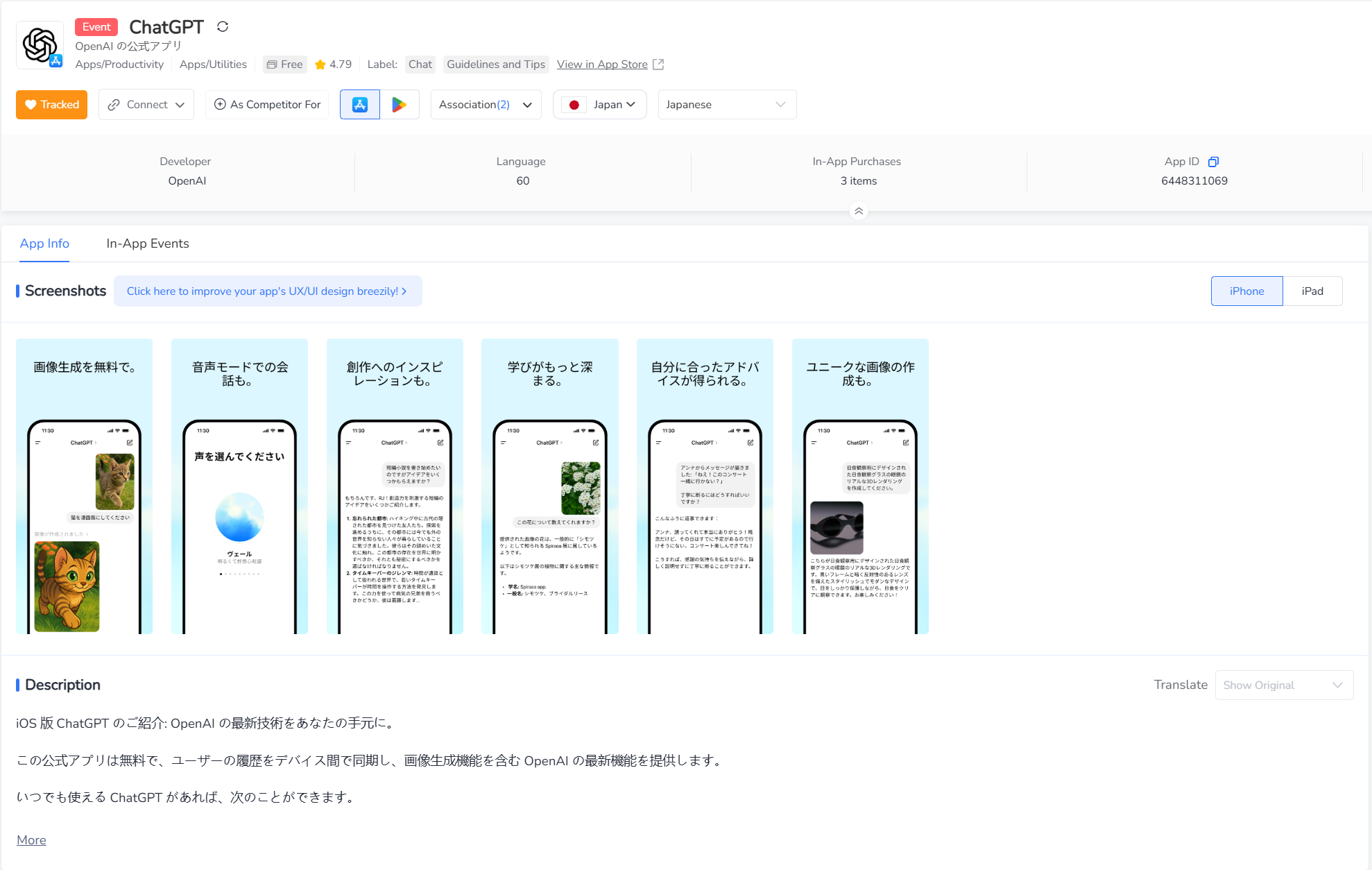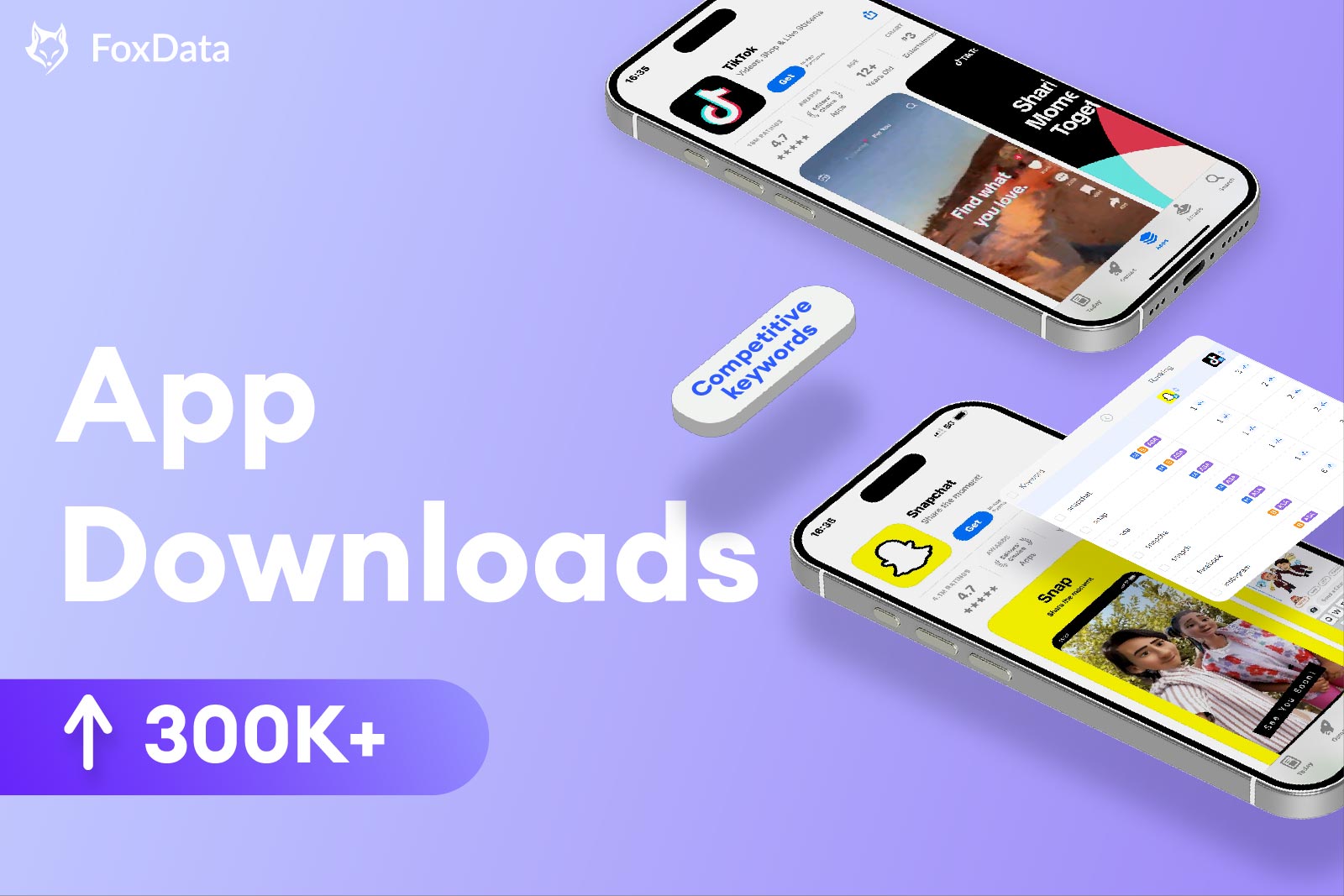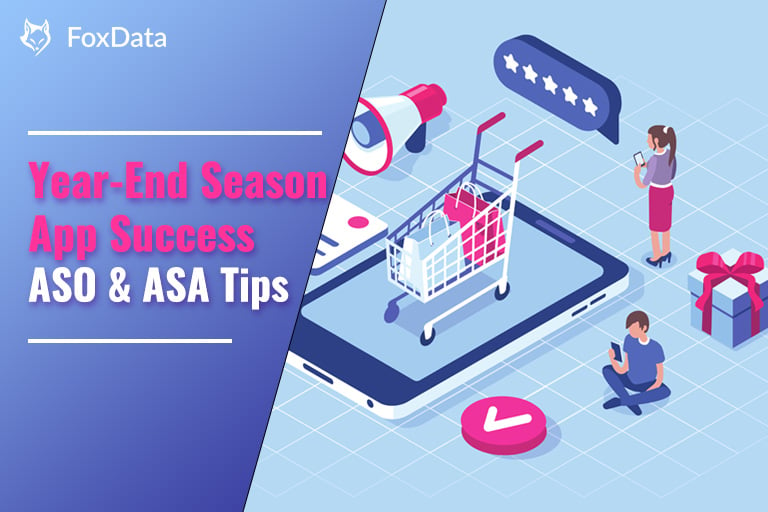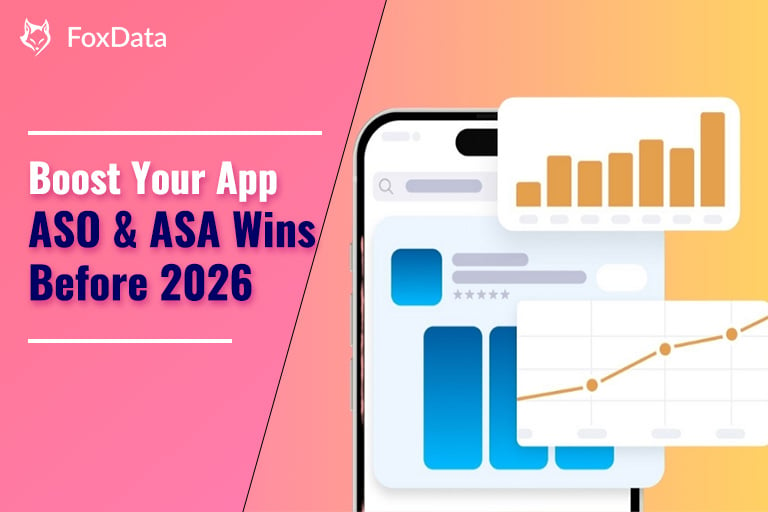
🌍 Global Dashboard Revamp|Introducing “My Competitors” and an Optimized Top Navigation
In the ever-intensifying global mobile market, we know that every improvement in data insight and analysis experience translates directly into faster, sharper decision-making.
Today, the Global Dashboard has been fully upgraded — introducing the brand-new “My Competitors” module, along with an enhanced top TAB navigation for a more streamlined, intuitive, and efficient analysis experience across products and regions.
🚀 Key Highlights
-
New “My Competitors” Module:
Add and manage your core competitors in one click. Easily compare app performance across global markets and stay ahead by spotting competitive trends in real time.
-
Enhanced Top Navigation:
The new structure offers clearer functional grouping and smoother switching between modules. Whether you’re tracking ranking trends or analyzing ASO keywords, information retrieval is faster and analytical flow more coherent.
As we always say —
“Only by seeing the competition ahead of time can you lead the change.”
Explore the all-new Global Dashboard today, experience “My Competitors”, and gain your unique global competitive perspective.
🔑 Key takeaways
-
App Store Optimization (ASO) is a core strategy for increasing app visibility and conversion rates on the App Store and Google Play, aiming to drive more organic downloads.
-
The foundation of ASO lies in three key pillars: keyword optimization, creative optimization, and conversion rate improvement.
-
Keyword optimization should consider search volume, relevance, and competition. Regular updates are necessary—set-and-forget doesn’t work.
-
Visual assets (title, icon, screenshots, videos) directly impact user impressions and install likelihood. A/B testing is recommended for ongoing improvement.
-
Localization is essential for global growth—adapt your content and visuals to align with local languages and cultural preferences.
-
Ratings and reviews significantly influence ranking and editorial exposure. Maintain a 4.0+ rating and respond promptly to user feedback.
-
Leverage In-App Events (on iOS) to boost retention and re-engage existing users.
-
Consistently monitor keyword rankings, downloads, conversion rates, and user sentiment to build a data-driven ASO growth loop.
-
ASO is not a one-time task—it’s a continuous, iterative optimization process. Tools like FoxData enable smarter, insight-led decision-making.
🔍 Use FoxData now to build your own high-performance ASO strategy!
Start a free trial to discover keyword potential, understand competitor trends, and comprehensively improve download conversion rates.
What is app store optimization (ASO)?
App Store Optimization (ASO) is a key strategy for improving the visibility and appeal of an app on platforms like the App Store or Google Play, with the goal of increasing organic downloads. ASO focuses on three core pillars:
- Keyword Optimization: By carefully selecting and optimizing relevant keywords, you can elevate your app’s ranking in search results. This makes your app more likely to be discovered when users search for similar apps.
- Visibility Enhancement: Boost your app’s exposure by participating in featured listings, running in-app events, or leveraging promotional content to attract attention from wider user segments.
- Conversion Rate Optimization: Refine the content and visuals on your app store product page — including your app icon, screenshots, preview videos, and app description — to increase the likelihood that users will install your app.
By mastering these elements, ASO enables your app to stand out in saturated markets and reach a broader audience.
How ASO Has Evolved
Since the introduction of the App Store, ASO has evolved from simple keyword placement in app titles and descriptions to a more comprehensive strategy. Today, it covers creative optimization, localization, user engagement tactics, and competitor benchmarking.
Modern ASO is no longer just about visibility — it’s increasingly interaction-focused. App stores now showcase personalized app content via features like “Suggested Collections” to push contextually relevant apps directly to users, improving both engagement and retention.
How Do App Store Algorithms Work?
App store algorithms play a crucial role in determining an app's ranking and visibility in search results. To succeed on the App Store or Google Play, it’s essential to understand the two primary factors that influence rankings: Keyword Relevance and Ranking Strength. Below is a breakdown of how these factors work differently across platforms.
Keyword Relevance
Keyword relevance measures how well your app metadata aligns with user search queries. The placement and context of these keywords significantly impact how your app is indexed and ranked.
App Store – Keyword Relevance:
- Metadata-Based Evaluation: Apple's algorithm considers keywords found in your app title, subtitle, and the 100-character keyword field. Keywords in the title hold the most weight, followed by those in the subtitle and keyword field.
- Localization: If you want to rank well in multiple countries, it's necessary to localize keywords into the corresponding language metadata. Proper localization can dramatically increase visibility worldwide.
- No Keyword Repetition Required: Duplicating keywords across metadata fields does not positively impact ranking. Apple only considers a keyword once, regardless of how many places it appears.
Ranking Strength
Once keyword relevance is evaluated, app stores move on to performance and authority signals to determine which relevant apps deserve the top spots.
App Store – Ranking Strength Signals:
- Download Velocity: A surge in downloads over a short period can boost rankings significantly — especially for new apps, even with limited history.
- Conversion Rate: Apps that effectively convert impressions into installs receive higher priority in rankings.
- Ratings & Reviews: Maintaining a consistent rating of 4 stars or higher, along with positive reviews, helps strengthen your app's authority.
- In-App Events: Apple indexes in-app events, allowing your app to rank for queries related to event metadata.
Click here for the full guide to mastering Google Play optimization.
How to Do App Store Optimization?
App Store Optimization (ASO) is an ongoing, dynamic process intended to improve your app’s visibility, ranking, and appeal in both the App Store and Google Play. Successful ASO bridges user intent, metadata optimization, creative execution, and data-driven iteration. Below you’ll find a practical, step-by-step guide on how ASO works in practice.
Step 1: Analyze Competitors' ASO Strategies
Understanding your competitors is the first and most critical step in ASO. Identify apps that target similar keywords or address the same user needs. Analyze their app page structure, metadata, screenshots, and copy to discover effective strategies and opportunities for differentiation.
With tools like FoxData’s ASO Timeline, you can track real-time and historical changes in competitors’ metadata, benchmark performance across categories, and fine-tune your decisions accordingly.
Navigate: [APP] → [Versions] → [Time Line]
📊 FoxData’s timeline shows metadata updates across versions for any competing app.
🔍 Competitor Benchmarking & Ranking Insights
- Multi-Dimensional Competitor Analysis
- Quickly build a library of competing apps and monitor their keyword strategies, rankings, and rating changes.
- Visualize their creative asset updates and metadata revisions over time.
- Compare regional differences in metadata structure to uncover localization strategies.
- Rank Tracking by Country/Region
- Explore daily/weekly/historical ranking charts for any country.
- Spot rising trends and identify what helped new entrants climb the charts.
- Understand which keywords and creatives contributed to high-ranking apps.
Step 2: Audit Current Metadata Performance
Before making updates, evaluate which of your current keywords, icons, or creatives are performing well. Which keywords are ranking? Which ones are actually driving downloads? Keep what’s working and plan to improve or replace underperforming elements.
Use FoxData’s Keyword Intelligence module to import your existing keyword list and assess:
- Organic ranking per keyword
- Search volume
- Estimated installs per keyword
FoxData helps you identify which keywords are real drivers of discovery.
Step 3: Conduct Keyword Research & Optimization
Keyword research is at the heart of ASO. Your goal is to align with what users are actively searching for.
● Build a Comprehensive Keyword List
Start by brainstorming terms related to your app’s features, benefits, and use cases. Include long-tail phrases. Use FoxData’s AI Keyword Generator and User Review Mining to source hidden terms directly from your audience.
Finalize a list of 150–200 relevant keywords that span feature-based, intent-driven, and emotional language triggers.
🎬
Content will be displayed after page load
● Prioritize Keywords Strategically
FoxData provides Relevance Scores, Search Volume, and Difficulty indicators to help you identify high-opportunity keywords with achievable ranking potential.
FoxData Relevance Score: 0–100, Measures how well a keyword aligns with your app’s core purpose.
🔧 FoxData Modules: Keyword Research & Semantic Trend Detection
- Use semantic discovery to generate related keyword suggestions.
- Add trend, difficulty, and competitive benchmarks to prioritize.
- Import competitor terms to build your defense or offense keyword bank.
- Use Trending & Ranking module to spot daily and seasonal movement.
- Visual heatmaps & alerts notify you about losses, gains, or stability in keyword ranking.
- Set up keyword-specific notifications for ranking dips.
Step 4: Optimize App Store Page Content
Optimizing your app store listing is crucial — users spend just a few seconds viewing your app page. Make every visual element count.
App Title & Subtitle:
Use clear, concise language to communicate the core functions of your app. Insert your most valuable keyword early in the title.
On the App Store, use the subtitle strategically; on Google Play, focus on the short description to highlight your unique selling points.
Visual Assets:
Users typically spend less than 3 seconds on an app store listing — so your icon, screenshots, and videos must immediately capture attention.
- Screenshots should illustrate core benefits and UI snapshots clearly. Highlight value propositions and avoid visual clutter.
- Icons should be minimalistic and easily recognizable. Use distinctive brand elements when appropriate. A/B testing is encouraged to find the best-performing version.
- App Preview Videos should showcase actual in-app usage and features. Avoid time-sensitive content so your video remains relevant longer. Customize language and visuals based on local cultural expectations.
- You can use Product Page Optimization (PPO) on App Store and Store Listing Experiments on Google Play to test different creatives. Modify only one element per test to track its specific performance impact.
- Browse competitor creative libraries using tools like FoxData Meta Ad Creatives to review the latest trends in your niche.
- Filter by region or category to see what’s working across different audiences.
Step 5: High-Quality Descriptions and Localization
Quality Descriptions:
On the App Store, descriptions don’t impact search rankings directly but are still essential for persuading and converting users.
Localization Strategy:
Adapting your metadata and visual content to match cultural and linguistic preferences in different regions is critical. Localization increases reach and boosts conversion rates in global markets.
🗺 Example:
- In Japan, screenshot designs tend to feature dense text overlays and manga-style characters.
- Korean users often respond well to branded storytelling presentation.
AI application ChatGPT's localization insights within the app profile in the US and Japan. Source: FoxData.
- Track keyword trends in 80+ countries.
- Identify the top localized keywords for each market.
- Update creative assets and descriptions every 4–6 weeks to stay aligned with search and seasonal trends.
Step 6: Manage Reviews and Ratings
Ratings and reviews significantly influence search ranking and user trust. Aim to maintain an average rating above 4.0 and resolve issues promptly.
How to Improve Ratings Strategically:
- Trigger rating prompts after positive in-app experiences (e.g., completing a task or making a purchase).
- Avoid intrusive pop-ups — use subtle timing and placements.
- Provide robust in-app support to address user issues before they leave negative feedback.
Proactively responding to user reviews increases positive sentiment, boosts trust, and signals to platforms that your app is attentive to customer experience.
Use FoxData Review Analytics to extract keyword trends and negative themes from comments to fuel app improvements and messaging clarity.
🔍 FoxData Insight:
92% of featured apps on the App Store maintain a rating of 4 stars or higher — ratings directly factor into promotion algorithms.
- Classify reviews as Positive / Neutral / Negative at scale.
- Track shifts in perception across versions or updates.
- Examine rating concentration (e.g., too many 3-star reviews).
- Identify the most effective moments to prompt feedback (e.g., post-purchase, level completion).
Step 7: Secure App Store Features
Getting featured by Apple or Google significantly improves app visibility. To increase the likelihood:
- Ensure technical compliance: no crashes, performance issues, or TOS violations.
- Maintain a clean user interface, clear flows, and engaging design.
- Localize to demonstrate cultural relevance — this is especially important for Apple.
- Apply via official feature request forms — Apple now integrates the request into App Store Connect. You can even highlight in-app events to increase your chances.
💡 Frequent updates, quality promotions, and timely seasonal campaigns improve your app’s visibility to editorial teams.
Step 8: Track ASO Performance Metrics
App Store Optimization is an ongoing process that necessitates regular monitoring. Key performance indicators to track include keyword rankings, downloads, conversion rates, retention, and user feedback.
Consistent monitoring of app rankings and visibility is crucial. App stores regularly update their algorithms and face continuous competition, while user search behavior evolves over time.
🕒 FoxData Recommendations:
- Audit and update App Store metadata every 4 weeks
- Refresh your Google Play assets every 4–6 weeks
- Run consistent A/B tests on new icons, visuals, and copy
- Use FoxData Competitor Monitoring to identify patterns and weaknesses in your niche
By continuously refining keyword selection, visual appearance, and engagement mechanics — and grounding your decisions in data — you’ll unlock sustained ASO performance and app growth.
FoxData Exclusive:
Emerging Trends Impacting ASO in 2025
As app stores innovate to enhance user discovery and storefront experience, keeping up with trends is essential. The following three developments are shaping the future of ASO:
Voice Search Optimization
With voice search gaining popularity, app stores now use Natural Language Processing (NLP) to interpret conversational queries. This means apps must optimize metadata using natural, full-sentence phrasing.
Example: Instead of targeting "budget tracker," consider optimizing for phrases like "How do I track my monthly expenses?" — aligning with how users speak to voice assistants.
Keeping pace with these trends ensures your app stays relevant and continues delivering a high-quality experience.
What Tools Do You Need for ASO?
App Store Optimization (ASO) is a multifaceted, ongoing process that relies on specialized tools. Leveraging robust ASO tools provides critical data insights, enabling the construction of scientific, efficient, and results-oriented optimization strategies to enhance visibility and conversion rates in a competitive market.
Here's a breakdown of essential tool categories for achieving ASO excellence:
Keyword Research Tools
Keyword research forms the foundation of ASO, helping you identify the search terms users employ when looking for similar apps. High-performance keyword tools not only uncover high-volume, relevant keywords but also pinpoint opportunities to boost visibility.
Platforms like FoxData also offer multilingual keyword suggestions and global market data tracking, supporting app globalization efforts.
A/B Testing Tools
By testing different icon, screenshot, and description layouts, A/B testing helps identify the most appealing versions, thereby improving page conversion rates and downloads. Google Play Console (for Android) and App Store Connect (for iOS) both offer built-in A/B testing features, allowing you to easily optimize visual and textual content to enhance user appeal.
Market Analysis Tools
Staying ahead requires close monitoring of industry trends and competitor activities. Market analysis tools provide insights into competitor strategies, identify growth opportunities, and inform optimization directions aligned with market dynamics.
For instance, FoxData offers in-depth data support, including competitor performance analysis and market trend assessment, helping you stay informed and make precise decisions.
In Conclusion
By adhering to these strategies and staying informed about the latest trends, you'll ensure your app achieves sustained visibility and growth in 2025. Implementing data-driven and user-centric ASO strategies is key to standing out in a competitive market.
FAQ
Q1: Is ASO applicable to every type of app?
Yes. Whether your app is a game, productivity tool, educational resource, or e-commerce platform, ASO is a crucial strategy for increasing visibility and conversion rates. Different app types may face varying user search behaviors and competitive landscapes, so keyword strategies and page design should be optimized according to target user characteristics.
Q2: How should I start optimizing my new app without reviews and ratings?
Even without reviews, you can establish initial exposure by focusing on keyword optimization, visual assets, and localization. I suggest encouraging users to leave ratings through non-intrusive pop-ups after they complete core tasks. Simultaneously, ensure you respond quickly to user feedback to build a positive reputation, thereby creating a virtuous cycle.
 Keywords Research
Keywords Research  Reviews Management
Reviews Management  User Activity Monitoring
User Activity Monitoring  User Retention Analytics
User Retention Analytics  Global Market Research Top Charts
Global Market Research Top Charts  Trending Apps Bidding Keyword Analysis Ad Creatives Analysis AI App Marketing
Trending Apps Bidding Keyword Analysis Ad Creatives Analysis AI App Marketing  Keyword Tools Rating & Reviews Tools App Marketing Research Store Insights Est. App Downloads Est. App Revenue App Data Analysis
Keyword Tools Rating & Reviews Tools App Marketing Research Store Insights Est. App Downloads Est. App Revenue App Data Analysis 


